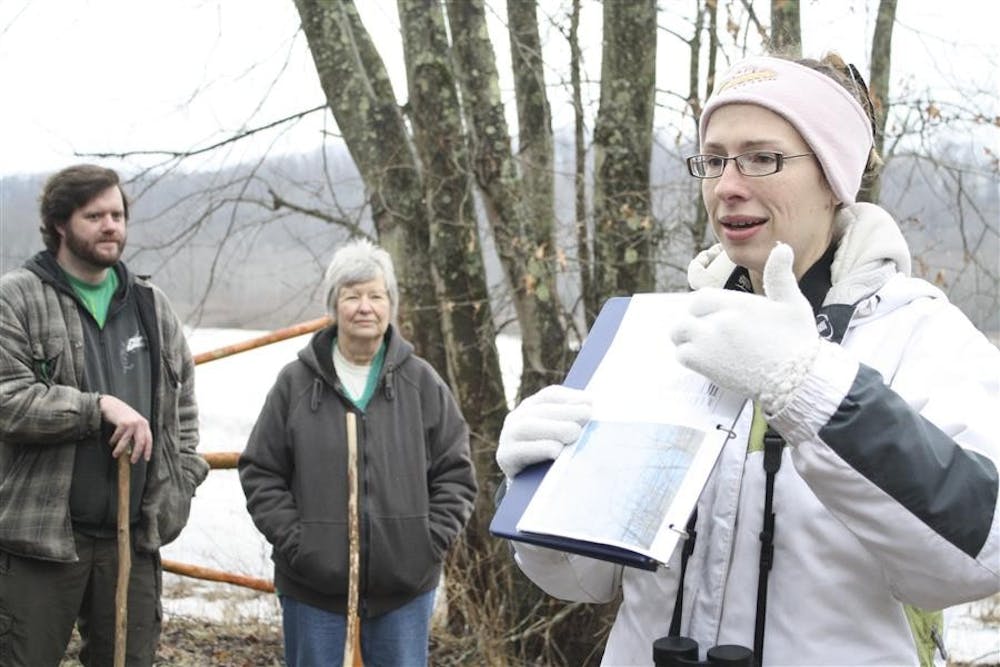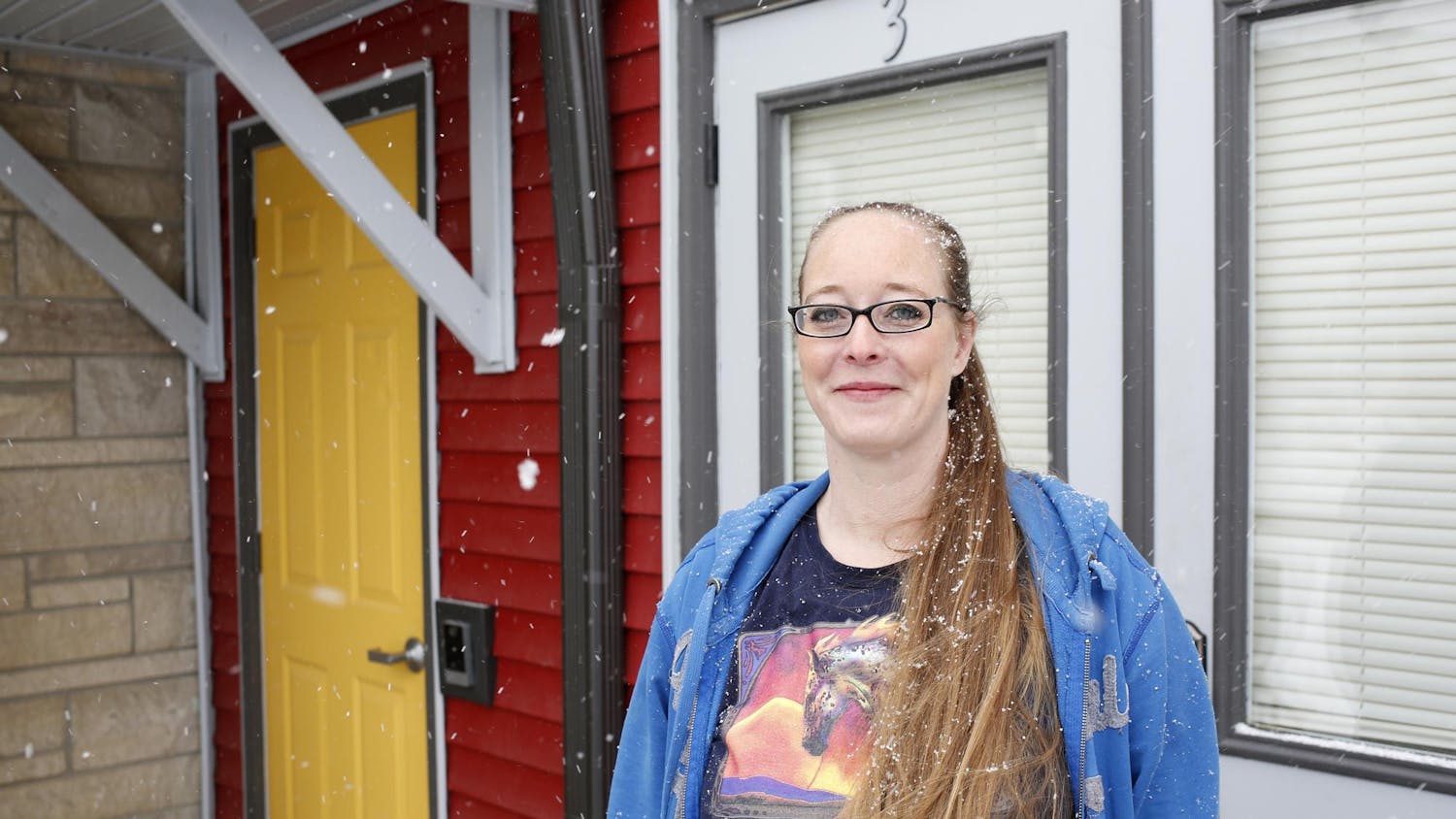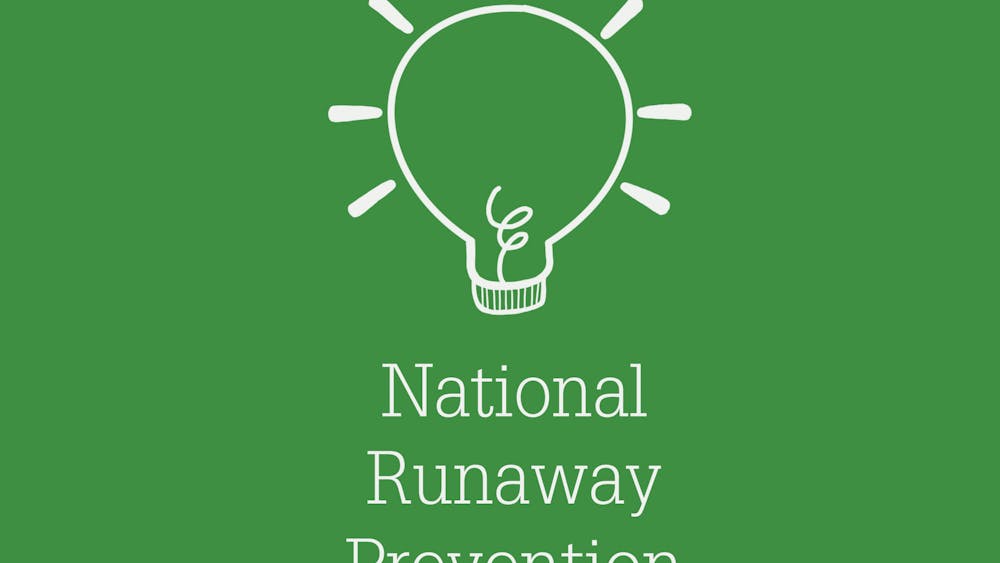About ten pairs of boots squished along the half frozen, half waterlogged path in 30-degree weather at Stillwater Marsh on Monroe Lake early Sunday morning.
Naturalist Jill Vance led a 1.75-mile hike through the seasonal wetland area, which is managed by the reservoir’s staff. Sunday was World Wetlands Day, an annual international event marking the anniversary of the adoption of the Convention on Wetlands.
The convention was signed in Ramsar, Iran, in 1971, and was originally signed by 18 parties. Since then, the number of signatures has increased to 168 participating countries. There are 2,177 Wetlands of International Importance, according to the Ramsar Convention website.
“The primary intention of this hike is to showcase what we do as far as managing the land for the wetland complex,” Vance said.
The Paynetown Activity Center, also on Monroe Lake, organized activities for children from 1 to 4:30 p.m. in honor of World Wetlands Day. Children could assemble their own 3-D wetland animals and watch films about wetland wildlife while munching on popcorn.
The levee path is closed to visitors October through mid-April to create a resting area for the birds. That said, the birds’ winter won’t be entirely peaceful.
“We do provide some limited opportunities for hunters to come in here,” Vance said. “All the funds that we get to manage the habitat and support these wildlife populations actually comes from hunting dollars.”
Dolores and Jason Francis, mother and son, said they usually hike throughout the winter and around their home — though not as much as they would have liked in the month of January because of the inclement weather. It was their first visit to Stillwater Marsh.
“This is the first time I’ve ever been here, but I’ve been on a good many of Jill’s hikes,” Dolores said. “I just enjoy these kind of hikes. I always learn something.”
The Indiana Wetlands website estimates there are 14,416 acres of wetlands in Monroe County and 1,007,194 acres statewide.
“Wetlands are among the world’s most productive environments,” the website for the Convention on Wetlands explains. “They are cradles of biological diversity, providing the water and productivity upon which countless species of plants and animals depend for survival.”
Stillwater Marsh is one of Lake Monroe’s seasonal wetlands. Contained by a man-made levee wall, Stillwater is flooded into one continuous wetland area in the winter months and is closed to visitors from Oct. 1 to April 15.
“We have a bunch of different habitats, like a patchwork through this area, so we can support a variety of needs that wildlife are going to have,” Vance said.
Vance said the Monroe Lake reservoir was established in 1974. As the lake was put in, some wetlands were created as well.
She added that Stillwater is by far the biggest area in the reservoir.
“The intent was — after the lake went in — to create not just a wetland area, but a true wetland-managed complex,” Vance said.
The purpose of Stillwater is primarily to attract wildlife, specifically water fowl, Vance explained.
In the summer, fields in Stillwater are planted with corn, millet and other crops. When the area is flooded with water, the birds are provided with an easily accessible source of food and a respite from predators who won’t follow them into the water.
Pumps flood the reservoirs in early October, Vance said. The largest pump is 24 inches in diameter, and runs constantly for about ten days, moving 18 to 20 thousand gallons every minute.
The Environmental Protection Agency estimated that Indiana lost 87 percent of its wetlands by the 1980s.
“We don’t have nearly as many as we used to,” Vance said. “Although our numbers have trended slightly back up.”
Natural wetlands are important to preserve not only for wildlife, but also because they act as a filter for water. World Wetlands Day works to raise awareness of the importance of these reserves.
“It’s a celebration of wetlands and what they do for people and animals all around the world,” Vance said.
— M.K. Wildeman
World wetlands celebrated at Monroe Lake

Get stories like this in your inbox
Subscribe





